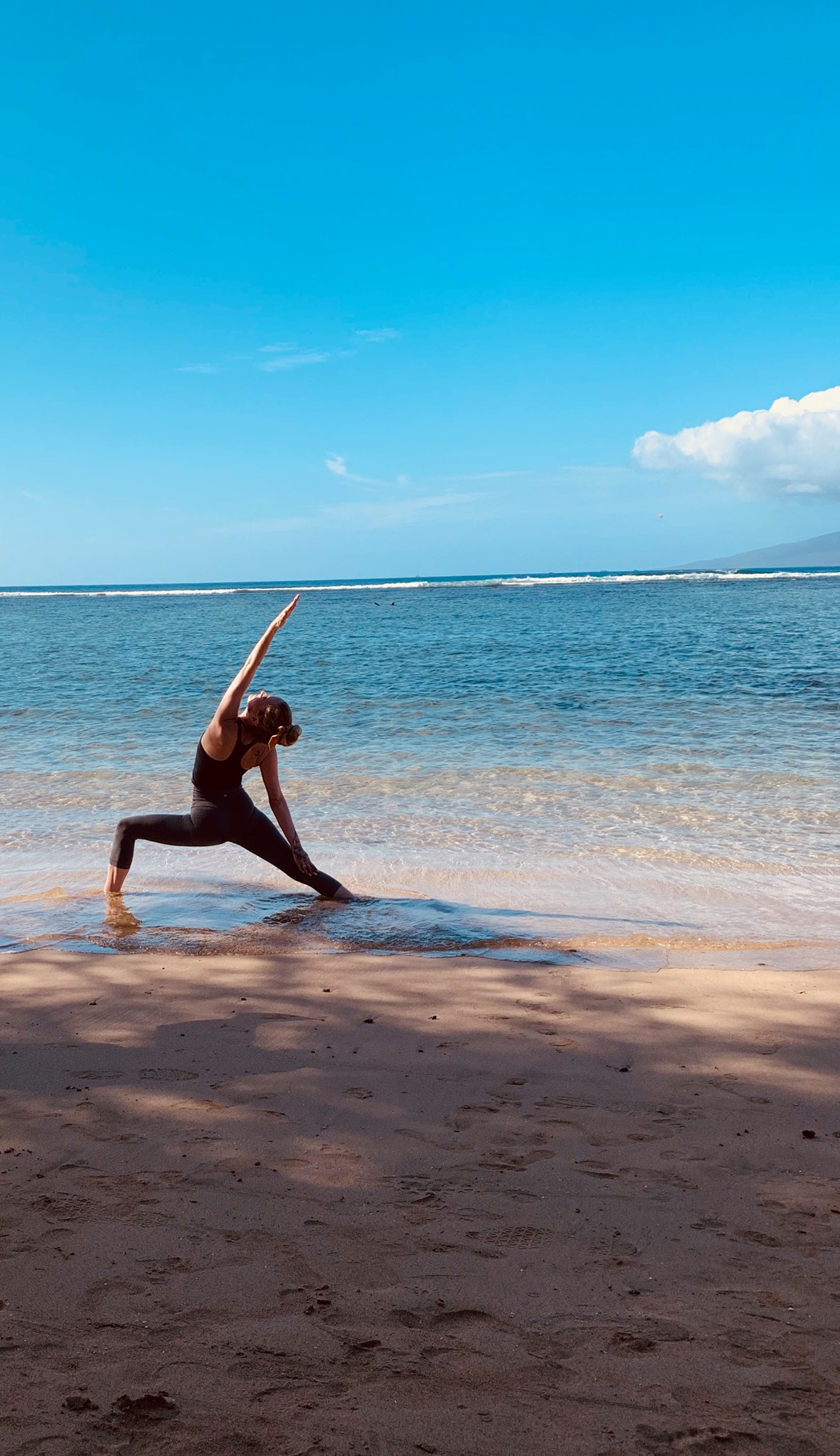Coming Back To A Studio Yoga Practice After Injury
Sometimes We Must Begin Again from the Beginning.
Fall 2015, I experienced an S.I. joint dislocation, which resulted also in the tearing of connective tissue. I was unable to find any comfortable position in my body, let alone practice yoga at the studios. I had to let go of my yoga teaching schedule, and find work in the field of psychology. I was no longer able to run, hike, walk, sit, sleep, or snowboard without pain. I spent a few months in physical therapy with cold laser treatments, and therapeutic ultrasound. As an athlete and yoga professional, my mental health was challenged.
I learned humility. Patience was testing my faith. It was challenging me to find acceptance. For over a year, I did not know if I would ever recover. The healing process took about two years before I again had freedom and confidence in an advanced yoga practice, and my favorite physical activities.
The first yoga studio practice where I was able to again explore advanced poses and sequences brought me to child’s pose. Tears of joy were falling down my face. I truly was taken to my knees and in praise of God. Since, I have been back to practicing and teaching yoga full time, and my heart is blessed with much more compassion for myself, and others.
When we first come back to practicing yoga post injury it is so important to know our edge. We bring ourselves to the practice, our personality, our ego, our expectations of ourselves, etc. What we were used to doing in our yoga practices before injury, may no longer be accessible. This is also true as we accept the aging process in our bodies, or if we are living with disability, disease, or in recovery post surgical intervention. For those of you who may be with the experience of recovery, disability, or disease (acute or chronic) know there is still yoga to practice, and please reach out for support and guidance to give yourself the practice of yoga.
There were poses I would explore in my 20’s and 30’s, that I just don’t like doing so often now that I am in my 40’s. This is where we still get to practice yoga. Yoga does not require an able or flexible body, this helps and is perhaps good karma, but is not a requirement for the yoga experience. We can not stop change, we can not stop aging, death, or the moments of injury, or sickness, etc., and these experiences of challenge do not have to stop us from practicing yoga. In fact, it is those challenges that can take us into the deeper practices of yoga.
This is an important truth to protect yourself from excessive ego in the yoga practice. Remember, we never want to compensate the integrity of our body for the glory of a yoga pose. Challenge in the moment is usually a measure of our resistance to change. As yoga practitioners it is the goal to show up to the moment, the whole truth of the moment, with radical acceptance, and release the resistance. We ground in peace. Presence remains steady, always there, and persistent. These are the true practices of yoga, the ones that do not require an able body, yet require an open heart.
I experienced two significant injuries from pushing myself too far in my yoga practice. First, was a hyperextension injury to both my wrists practicing float throughs during my Astanga yoga practice. A yoga teacher and mentor I admired was encouraging me, claiming that I would be a well known teacher for float through instruction, and an expert. This pumped my ego as I desired to make my teacher happy. However, this injury was devastating. I had to splint both of my wrists. Normal daily activities, like brushing my hair, driving, buying orange juice or laundry detergent was not happening for weeks. Forearm balancing, planks, side planks, handstands are still yoga poses I consider with reverence and caution.
The lesson I learned was I lost my self government and was overtaken by my desire for people pleasing. We never want to loose the seat of our intuition and inner knowing. This is how we loose presence and become vulnerable to getting hurt. As an instructor of regular yoga classes, I make it very clear to the class that my voice is just a suggestion, and that the practitioner is free to accept or reject the cues. I encourage my class to modify as they sense needed, and describe that to modify is a sign of integrity. It is integrity to know how to rest and humble the self in the yoga practice. If any instructor claims authority of your yoga practice, run.
Remember that you go direct, you are the conduit for direct experience with the yoga practice. Never give this authority away. A good connection with our teachers is a connection based on partnership, good communication, integrity, and empathy.
The second yoga practice injury I experienced was practicing hot yoga for an advanced Bikram class video recording. I had been preparing my spine with back bending weeks in advanced. In the practice I agreed to up level to the advanced Bikram series, which included me to drop back for back bending, demonstrate scorpion pose, and full camel pose with crown of head to soles of feet. This was a quicker recovery for me, but it still took about 3-6 weeks to recover from my low back strain. This injury was again my ego getting out of alignment with integrity. Because it was a video recording I wanted to be the perfect yoga model. There are so many yoga professionals that are doing such amazing movements with their bodies, I felt a lot of pressure. My ego went into a competitive mode, and I suffered the consequence with a low back strain.
This was a humbling and important lesson for me. The truth is, is that it is not about being perfect in a yoga pose, it is about being. Yoga is not something you actually do, because Yoga is a state of being. Since this injury I continue to celebrate the beautiful bodies of yoga athletes who can accomplish the most advanced poses. It is truly an accomplishment and an art! However, I now honor and celebrate what I can do, and practice with good discernment listening to my body’s intelligence and guidance. After all, there is nothing to prove. It is ultimately love. And yoga is like love, spontaneous.
So when you come back to the yoga studio practice remember to self govern, to modify and rest when needed, to celebrate what you can do, and have an attitude for exploration. There is no rush, and it may be different in your body, but the practice will meet you there.
As an instructor of yoga, I appreciate when yoga practitioners let me know what is going on with their bodies. It invites connection and a chance for me to really guide and support the recovering practitioner physically, mentally, emotionally, and spiritually.





